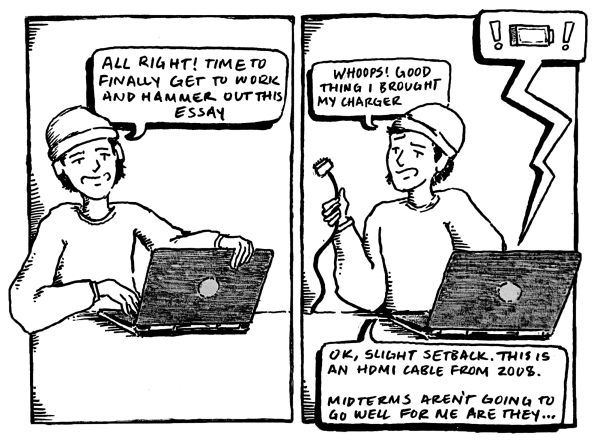Revitalized Campus In Critical Moment for College Traditions
For the first time since March 2020, the full student body is on campus. For those of us who were at Oberlin during the past three semesters, when campus was “de-densified,” this can feel both overwhelming and invigorating. The campus once again feels full of life — some argue too full — and yet it’s also apparent that things are very different than they were the last time we all were in town.
The reality is, more than half of current students, both first- and second-years, have never experienced “traditional” college life. Second-years, just like their first-year peers, are encountering for the first time a lively, full campus with events like concerts and Splitchers. For most of last year, the basic elements of the college experience — such as indoor dining, studying in libraries, and parties — were outlawed. First-years had their high school years irrevocably altered by COVID-19, and many are starting their college experience on shaky legs. In first-year seminars and Peer Advising Leader groups, first-years have expressed concerns about whether they are prepared for the academic rigor required at the collegiate level.
Underclassmen now have to navigate many aspects of Oberlin’s culture for the first time. Some traditions — such as attending “Organ Pump” in Finney Chapel or watching a movie at the Apollo Theatre — are easier to carry on. However, COVID-19 dealt a serious blow to the larger campus culture.
Student organizations are one of the primary drivers of Oberlin culture. While many clubs shut down during the pandemic, their hiatus was prolonged past the initial shutdown by the de-densified campus that continued through the summer. With fewer students on campus at a time, gaining quorum for smaller and more niche clubs proved to be a challenge. Now, clubs are reinvigorated — improv troupes that have not performed in years are holding auditions, student support networks are gaining momentum, and identity-based organizations have a higher membership.
But the lack of student institutional knowledge is creating challenges. Clubs that had paused for months, and failed to recruit new members, are now lacking the knowledge that has historically been transferred from older students to newcomers. This ranges from logistical tasks, such as how to run officer elections or plan meetings, to traditions such as community dinners and social events. Larger goals often fall by the wayside. Many third- and fourth-years are burned out from running student organizations over Zoom, and new club leaders now feel that they are engaging in the daunting task of reinventing the wheel.
There’s also a noticeable disconnect between upperclassmen and lowerclassmen. While third- and fourth-years grew closer over the summer semester, when they were all living together on north campus, they have only spent a single, hybrid semester on campus with second-years. This has resulted in fewer close friendships and meaningful interactions between upperclassmen and lowerclassmen.
As a result of this distance between class years, it’s become more difficult to pass on the culture of Oberlin. This isn’t just a loss for Oberlin’s student institutions; it also constitutes a devastating loss of a classic Oberlin tradition: peer mentorship. This Editorial Board has many alumni to thank, not only for supporting us through social pressures and academic opportunities, but also for teaching us how to love Oberlin. We can’t imagine having the same Oberlin experience without their support.
As we transition back into a newly revitalized campus, we are not only setting the tone for the academic year ahead of us, but we are rebuilding Oberlin’s culture for generations of Obies to come. Moving into the rest of this semester, we invite all the members of our Oberlin community to be more intentional about the culture and tone they are setting. The actions we take now will define Oberlin in the coming years.


